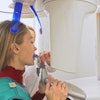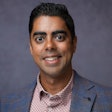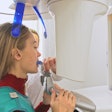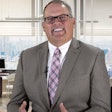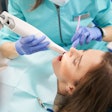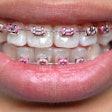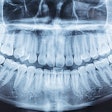
To address access-to-care shortcomings across the state, California this week launched a four-year, multimillion dollar pilot program that will put telehealth technologies in the hands of dental hygienists and assistants working with underserved populations in rural and urban communities.
— Paul Glassman, D.D.S., M.B.A.,
director of the virtual dental
home project
The "virtual dental home" project, spearheaded by the University of the Pacific (UOP) Arthur A. Dugoni School of Dentistry, the California Dental Association (CDA) Foundation, and the California HealthCare Foundation (CHCF), will provide dental services to some 3,000 low-income children, seniors, and people with disabilities at 15 locations across California, from Los Angeles and the San Francisco Bay Area to the Central Valley and northeastern parts of the state.
The project is initially being supported with a $100,000 grant from Verizon Foundation, the philanthropic arm of Verizon, with additional funding from the American Dental Hygienists' Association, the CDA Foundation, the CHCF, and the California Department of Developmental Services.
"I have worked with community-based systems to improve access to care for underserved populations for most of my career, and in the last few years this has evolved into getting hygienists and dental assistants onto the front lines," Paul Glassman, D.D.S., M.B.A., a professor of dental practice at UOP and director of the virtual dental home project, told DrBicuspid.com. "Now the technology has finally gotten to the point that we can do things at a distance that we couldn't do before."
Targeting the underserved
Millions of Californians, especially the elderly, people with physical disabilities, and low-income children and minority populations, cannot access oral health services at traditional dental offices due to disability or health professional shortages, according to the CDA. More than 4 million people live in the 97 California communities that have a shortage of dental professionals.
The oral health needs of children in underserved communities are of particular concern, the CDA noted. In California, early childhood caries is even more prevalent than in other parts of the country: By kindergarten, more than 50% of California children have already experienced tooth decay, 28% have untreated tooth decay, and 19% have extensive tooth decay, according to a 2006 Dental Health Foundation report.
Through the virtual dental home project, these underserved populations will have access to dental care at convenient sites in their communities, such as school-based clinics, group homes, day programs for dependents, assisted residential facilities, and nursing homes.
There, using digital technologies and services that will link them to dentists -- up to 100 miles away in some cases -- registered dental hygienists in alternative practice (RDHAP), dental hygienists working in public health programs (RDH), and registered dental assistants (RDAs) will:
- Assess patients
- Create electronic records, including digital radiographs and photographs
- Chart dental findings
- Provide prevention education
- Obtain information about each patient's health, social, and other history
Their equipment will include a laptop computer, modem, portable x-ray unit, digital sensor, and USB intraoral camera. Records will be entered into the Planet DDS Denticon Web-based patient management software, enabling participating dentists to access the information no matter where they are. The dentists will then make diagnoses and develop treatment plans, and the onsite hygienists and assistants will provide preventive and limited restorative treatments, including applying fluoride and sealants, performing scaling and planing, and doing interim therapeutic restorations to stabilize a patient before they are referred to a dentist for comprehensive treatment, according to Dr. Glassman.
"In each case, the community oral health provider is out in the field working with a dentist in a centralized location," Dr. Glassman said. Participating dentists will be located at dental schools, private practices, and federally funded clinics.
| Video courtesy of the University of the Pacific School of Dentistry. |
Diverse locations
The virtual dental home project is initially being rolled out at the Twin Rivers Unified School District in Sacramento, where it will serve more than 400 foster-care students in that district. Additional sites slated to participate in the program include the Open Door Clinic in Eureka, the Regional Center of the East Bay in Oakland, the San Andreas Regional Center in San Jose, the Golden Gate Regional Center in San Mateo, and a long-term care facility in Visalia/Fresno.
"We wanted a variety of different sites in terms of both geography and patient populations," Dr. Glassman said. "Some are urban, some rural, some school-based, some in nursing homes and residential care facilities for people with developmental disabilities. ... These are all underserved populations with inadequate access to care at this time. We wanted to show that this system is workable in a variety of situations."
Once the infrastructure is in place and the initial training complete, the first sites are expected to be up and running by early 2010, he said. The other sites are still being identified and selected, he added.
"What we want to demonstrate is that this is a system that can do a better job of keeping these complex populations healthy than the current system of trying to get them into the dental office," Dr. Glassman said. "We are hoping that, four years from now, we can show that this is a better way to provide oral health, at a much lower cost than traditional methods, and in a way that connects patients with dentists in their communities without creating another silo."
Copyright © 2009 DrBicuspid.com


